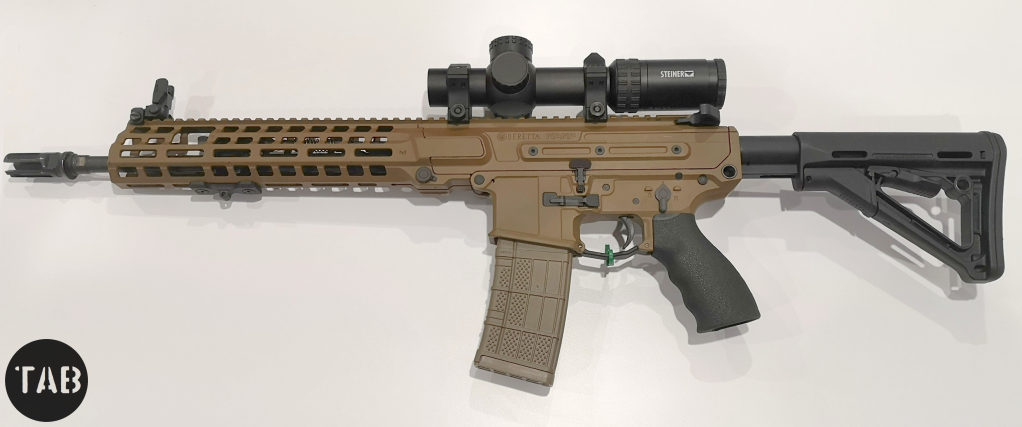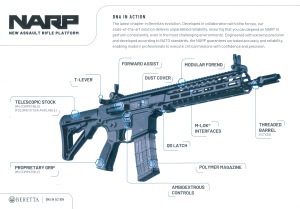The Russian military has published and disseminated numerous handouts to Russian troops on how to engage an M1A1 Abrams. There is a long history of armies publishing guides on how to engage specific targets with both sides in the current conflict disseminating threat recognition and vulnerability guides. One early Ukraine War example of this was the illustrations published by the Ukrainian government illustrating where to strike various vehicles with molotov cocktails.
A photo of one Russian document, entitled ‘Hit the Abrams’ Vulnerable Points’, likely published in early 2024, was posted by Russian correspondent Mikhail Andronik on 26 February with the simple caption “[RPG-7 emoji] Remember!!!”. From the photograph it appears that there is further text is printed on the reverse.

Handout (above) machine translated [from left to right, top to bottom]:
Hit the Abrams’ vulnerable points
Hit the guidance device with machine gun fire
Hit the gun
Hit the ammunition in the rear bottom of the turret
Aim for the larger gap between the armour of the hull and the turret and the Commander and gunner sighting devices
Hit the side of the hull with RPG fire of any models
The handout then advices that darkly shaded areas of the hull are ‘vulnerable to RPGs and fire from 30mm guns’ with anti-armour weapons including PG-7 warheads and disposable AT weapons. The handout also warns that the skirting over the tracks acts as additional spaced armour. The handout concludes by reminding the reader that [machine translated]:
“REMEMBER! THE ENEMY’S MAIN WEAPON IS FEAR. THERE IS NOTHING SPECIAL ABOUT FOREIGN EQUIPMENT, ANY EQUIPMENT IS VULNERABLE, YOU NEED TO KNOW WHERE AIM”

The image and information appears to be similar to that found in a more in-depth document entitled [machine translated] ‘Reminder To The Soldier On Fighting Enemy Tanks And Combat Vehicles In Combined Arms Combat’ which was published by the Ministry Of Defense Of The Russian Federation Main Directorate Of Combat Training in 2023. This document was acquired and published by Ukraine’s Territorial Defense Force’s Training Department (G7). This document advises on how to engage a variety of armoured fighting vehicles operated by Ukraine including: the Leopard 2, M1A1 Abrams, Challenger, Marder, M113 and AMX-10RC. Tactics, techniques, and procedures (TTP) documents like this one are commonly used by many militaries around the world to train troops how to address and overcome enemy doctrine and equipment.
With the arrival of the M1 Abrams in theatre highly anticipated by both sides Russian forces had ample time to prepare and disseminate information on how to engage various types of Western armoured vehicles. In September 2023 Izvestia interviewed Russian personnel and featured another info graphic which explained how to engage an Abrams showing many of the same weak points with a colour profile graphic and a slightly different front on illustration.

In early February another report, from RT, also included several info graphics showing the vulnerable points of the Abrams. RT correspondent Sargon Khadaya spoke to Russian personnel who reiterated that “like all equipment, these tanks have weak points.” The report included two different handouts outlining how to engage the Leopard 2 and M1 Abrams’ weaknesses. The M1 Abrams graphic again slightly differs from other examples seen in layout and formatting.
The first confirmed loss of an M1A1SA Abrams in Ukrainian service occurred on 26 February, just three days after the Ukrainian Armed Forces confirmed that the vehicles had been operational on the front line. Ukraine’s 47th Mechanised Brigade posted the first combat footage of the Abrams in action on 23 February. The brigade and its Abrams are part of stabilisation operations after the fall of Avdiivka in Ukraine’s eastern Donetsk region.
On 26 February, Russian Telegram channels began sharing low-resolution UAV footage of what was claimed to be an M1A1SA that was destroyed by the Russian 15th Separate Motorised Rifle Brigade. The imagery has not yet been independently verified but Oryx have listed the vehicle destroyed on their list of losses. Since the 26 February, Russian sources have posted other imagery of the knocked out tank. At the time of publication, neither the Ukrainian nor US governments have commented on the reported loss of an M1A1SA.
The Russian Ministry of Defence has capitalised on the apparent destruction of the Abrams posting interviews with the servicemen involved in the action on 4 March. A post on the Russian Ministry of Defence’s telegram page included an interview with the commander of the drone reconnaissance unit involved in the action, he said: ‘For two years they asked for that tank, and it took 20 minutes to destroy it”.

The tank was reportedly hit by a pair of FPV drones, one which achieved a mobility kill, which caused the crew to bail out, and a second which detonated stored ammunition. Both FPV drones attacked the M1A1SA from the rear – in line with the handout’s advice to “hit the ammunition in the rear bottom of the turret”. The drone reconnaissance unit commander said that they had: “looked at the structure of the tank in advance, where it would be best to hit it.” Interviews with members of the Russian drone unit were also published by major Russian news outlets including RIA, Zvezda and Izvestia.

The 47th Mechanised Brigade appears to have lost a second M1A1SA near Berdychi with imagery showing one of the tank’s tracks was broken – presumably by a mine detonation. The tank has then subsequently been further damaged either by artillery fire or drones. While this loss has not been independently verified its position has been geolocated.
As the handout points out all armoured vehicles are vulnerable, even highly capable Western main battle tanks. Situation and circumstances play a large part in the successful engagement of armoured vehicles and knowing the potential weaknesses of a vehicle is key.
Support Us: If you enjoyed this video and article please consider supporting our work here. We have some great perks available for Patreon Supporters – including early access to custom stickers and early access to videos! Thank you for your support!

































